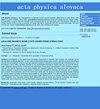Coherent manipulations of atoms using laser light
Q4 Physics and Astronomy
引用次数: 85
Abstract
The internal structure of a particle – an atom or other quantum system in which the excitation energies are discrete – undergoes change when exposed to pulses of near-resonant laser light. This tutorial review presents basic concepts of quantum states, of laser radiation and of the Hilbert-space statevector that provides the theoretical portrait of probability amplitudes – the tools for quantifying quantum properties not only of individual atoms and molecules but also of artificial atoms and other quantum systems. It discusses the equations of motion that describe the laser-induced changes (coherent excitation), and gives examples of laserpulse effects, with particular emphasis on two-state and three-state adiabatic time evolution within the rotating-wave approximation. It provides pictorial descriptions of excitation based on the Bloch equations that allow visualization of two-state excitation as motion of a threedimensional vector (the Bloch vector). Other visualization techniques allow portrayal of more elaborate systems, particularly the Hilbert-space motion of adiabatic states subject to various pulse sequences. Various more general multilevel systems receive treatment that includes degeneracies, chains and loop linkages. The concluding sections discuss techniques for creating arbitrary pre-assigned quantum states, for manipulating them into alternative coherent superpositions and for analyzing an unknown superposition. Appendices review some basic mathematical concepts and provide further details of the theoretical formalism, including photons, pulse propagation, statistical averages, analytic solutions to the equations of motion, exact solutions of periodic Hamiltonians, and population-trapping “dark” states.用激光对原子进行相干操作
一个粒子的内部结构——一个原子或其他激发能量是离散的量子系统——在暴露于近共振激光脉冲时发生变化。本教程综述介绍了量子态、激光辐射和希尔伯特空间状态器的基本概念,希尔伯特空间状态器提供了概率幅值的理论肖像——这不仅是量化单个原子和分子的量子特性的工具,也是量化人工原子和其他量子系统的量子特性的工具。讨论了描述激光诱导变化(相干激发)的运动方程,并给出了激光脉冲效应的例子,特别强调了旋转波近似下的两态和三态绝热时间演化。它提供了基于布洛赫方程的激励的图像描述,该方程允许将两态激励可视化为三维矢量(布洛赫矢量)的运动。其他可视化技术允许描绘更精细的系统,特别是受各种脉冲序列影响的绝热状态的希尔伯特空间运动。各种更一般的多层系统接受治疗,包括退化,链和环连接。最后部分讨论了创建任意预先分配的量子态的技术,用于将它们操纵成可选的相干叠加态以及分析未知叠加态的技术。附录回顾了一些基本的数学概念,并提供了理论形式的进一步细节,包括光子、脉冲传播、统计平均、运动方程的解析解、周期哈密顿量的精确解和种群捕获的“暗”态。
本文章由计算机程序翻译,如有差异,请以英文原文为准。
求助全文
约1分钟内获得全文
求助全文
来源期刊

Acta Physica Slovaca
物理-物理:综合
CiteScore
0.30
自引率
0.00%
发文量
0
审稿时长
>12 weeks
期刊介绍:
acta physica slovaca is an internationally recognised physics journal originally established in 1950. Since 1998 listed in Current Contents. Since 2006, acta physica slovaca publishes review and tutorial articles. Papers written by specialists in a given field are intended to be accessible also to non-specialists and PhD students. Although the printed version of the journal is available, all issues are free to download from the journal''s web page. We hope that the new issues of acta physica slovaca will be useful and interesting for readers.
 求助内容:
求助内容: 应助结果提醒方式:
应助结果提醒方式:


